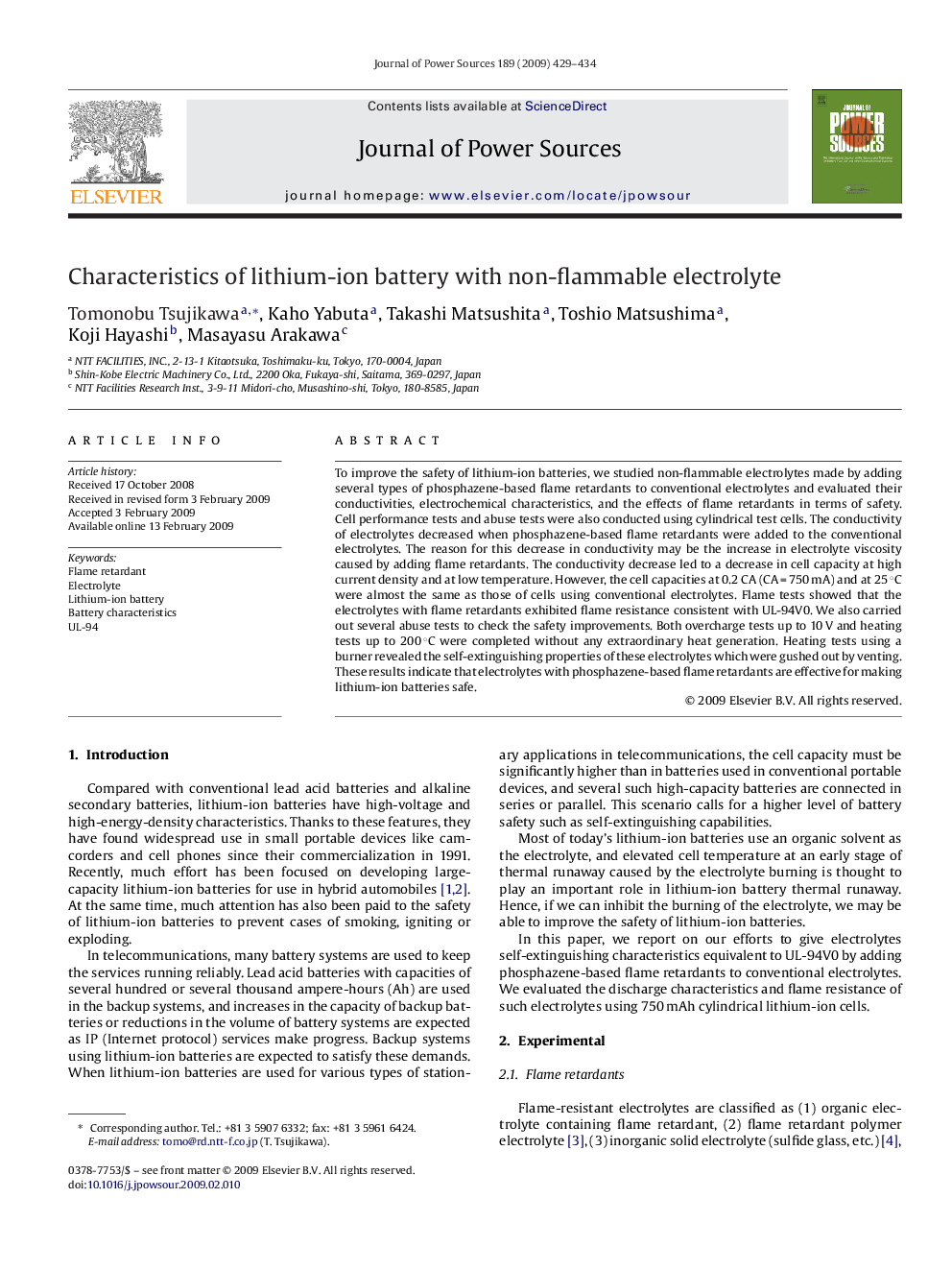| Article ID | Journal | Published Year | Pages | File Type |
|---|---|---|---|---|
| 1291206 | Journal of Power Sources | 2009 | 6 Pages |
To improve the safety of lithium-ion batteries, we studied non-flammable electrolytes made by adding several types of phosphazene-based flame retardants to conventional electrolytes and evaluated their conductivities, electrochemical characteristics, and the effects of flame retardants in terms of safety. Cell performance tests and abuse tests were also conducted using cylindrical test cells. The conductivity of electrolytes decreased when phosphazene-based flame retardants were added to the conventional electrolytes. The reason for this decrease in conductivity may be the increase in electrolyte viscosity caused by adding flame retardants. The conductivity decrease led to a decrease in cell capacity at high current density and at low temperature. However, the cell capacities at 0.2 CA (CA = 750 mA) and at 25 °C were almost the same as those of cells using conventional electrolytes. Flame tests showed that the electrolytes with flame retardants exhibited flame resistance consistent with UL-94V0. We also carried out several abuse tests to check the safety improvements. Both overcharge tests up to 10 V and heating tests up to 200 °C were completed without any extraordinary heat generation. Heating tests using a burner revealed the self-extinguishing properties of these electrolytes which were gushed out by venting. These results indicate that electrolytes with phosphazene-based flame retardants are effective for making lithium-ion batteries safe.
